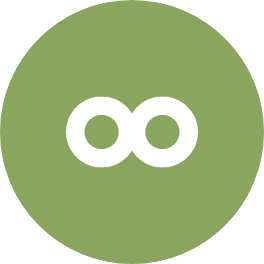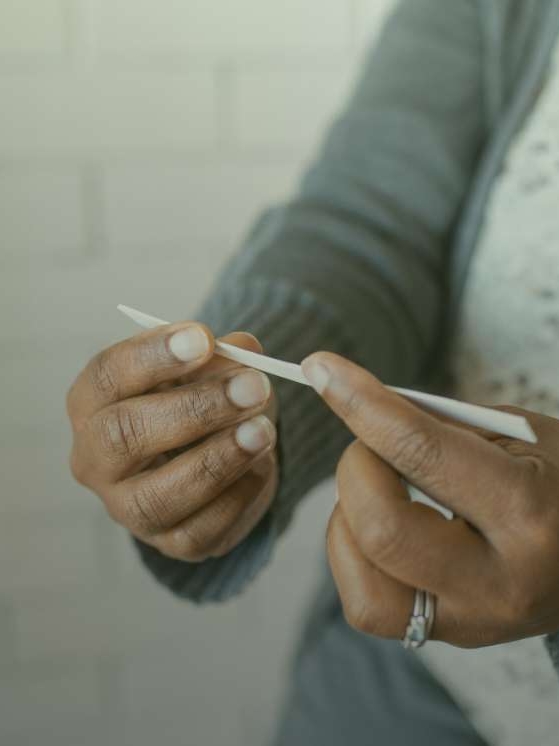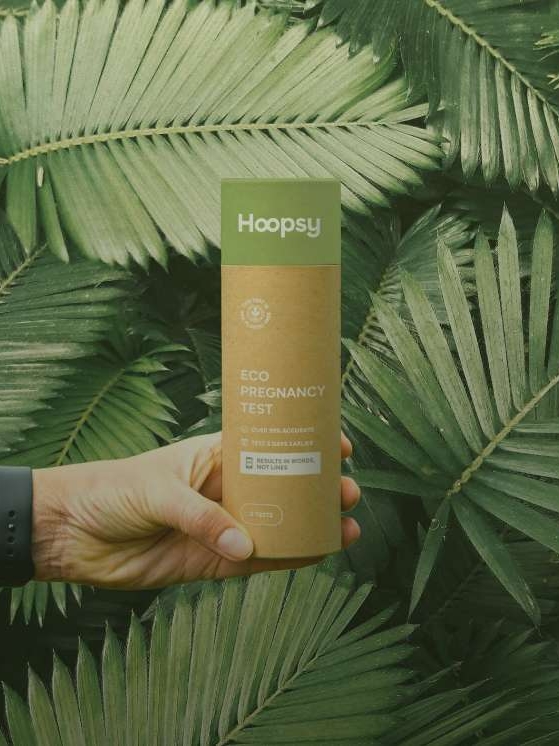At 45 years old, it’s rather late in the game to be starting on the baby journey, but I am told that I look in my 30s. I did think that maybe my insides might also look in their 30s…. Unfortunately not! This is why at 45 I started IVF. I should also tell you that I am single, so just having lots of sex was kinda hard, unless I just picked up randoms, and then that could be a whole can of worms, but there is another blog post on that…..
Why A Baby?
Everyone has their own reasons for wanting a baby. I always thought that I would meet a guy and have children, and yes, I did marry a guy, but it didn’t work out. At 33, I was back on the singles scene and thought there was still lots of time. Time goes by, and I don’t know about you, but I don’t really feel my age. One of my friends underwent IVF in 2019/20, and going through the experience with her made me realise that I did want a baby even if I was going to do it solo – previous to this, I had always said not without a partner.
IVF
When I decided to do IVF at 45, I was told by my fertility specialist that the chance of getting pregnant at my age with my AMH of 3 would be about 2%. Not very much…. I still thought it was worth a shot, looking back, that seems crazy, but pregnancy is all about hope, and someone has to be that 2%!
Before I started IVF, I had to be honest that I didn’t really look at what was involved with egg harvesting. My philosophy was, well, if I want a baby, I have to go through it. I’ll talk about it more in my IVF egg harvesting post. Let’s just say it wasn’t how they show it in the movies! It was November 2020 that I did my egg harvesting with all the injections and hope swishing around in my tummy.
The day I found out that my eggy didn’t make it to blastocyst, my fertility doctor called and asked me if I wanted to go again. At that stage, I didn’t see the point in trying again with my own eggs, with one ovary not working, and the chance was so low. When the specialist mentioned embryo transfer (that is, using a donor egg and donor sperm that have already made it to day five blastocyst) or using donor eggs as an alternative option, I decided to think about it.
Why An Embryo Transfer?
I looked into both egg donors and embryo donations, and it seemed easier to go with an embryo donor than to find an egg and sperm donor. My reasons for this were partly to do with time. Using a donor embryo, I found that many overseas clinics had day five blastocysts in the freezer ready to go, whereas finding an egg donor takes more time. Plus, there is no guarantee that the eggs from a donor are going to fertilise or make it to day five. For me, the decision was based on trying to get rid of as many variables in the process as possible. Having been through the egg harvesting and understanding how many steps there are in getting to a day five embryo, I felt that it reduced the number of things that needed to work, but little did I know!
I was given details by my Australian fertility doctor of clinics in Spain, Russia and Cyprus. I ruled out Russia, thinking that the climate there could mean I’d end up with a very pasty pale-looking child…. Cyprus, I love, and it was definitely in the running, but they only offered egg donors. This meant the eggs would need to be harvested, fertilised hopefully make it to day five blastocysts before they would be put into my uterus. Having been through egg harvesting, I decided that wasn’t an option for me. This left me with two clinics in Spain. I spoke to doctors at both, and one, in particular, I really liked, so I ended up going with the Institut Marques in Barcelona.
To prepare for the embryo transfer, there were drugs and ultrasounds to be done. First up was taking Progynova, a tablet that contains the female hormone, estrogen. This helps to thicken the lining of your uterus; they are taken from day one of your period. Around day 7-9 of your cycle, you go for an ultrasound to measure the thickness of the uterus lining. For me, that happened in Sydney before I flew to London. My lining was 4.9mm when I had it measured, which is okay, but not amazing. A friend drove me to the airport the next day. I was feeling very nervous. It was going to be a three-week trip to see family in the UK and get the embryo transfer, and, p.s COVID-19 was happening, so you can imagine how challenging travel was too.
Three days after I arrived in London, I flew to Barcelona for my transfer. By that point, I had also started using progesterone pessaries. I had to insert one in my vagina three times a day to increase my progesterone levels, as my body wouldn’t naturally be making it.
The Day Of The Embryo Transfer
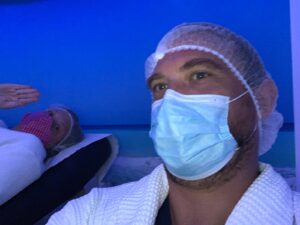
I went to the clinic, where everyone spoke English, and after filling in a few forms, my ‘personal assistant’ took me to a room to get undressed. Dressed in a dressing gown, hairnet, and attractive blue booties, I went into the transfer room, I guess you’d call it a theatre. First up, I was shown my embryo on the big screen, and the lab technician talked me through why it was a good one. They must all be good ones, surely?
Then it was down to business. A doctor inserted a straw (not sure what the official name is) into my uterus, and a nurse used the ultrasound to try and help the doctor find the right place, once they were ready. I could see it all on the screen next to me, but to be honest, it didn’t make a huge amount of sense. The lab technician brought the embryo into the room in a syringe of liquid. At this stage, the embryos are tiny – you can fit three on the width of a hair.
The syringe contents were squirted up the straw, and I didn’t feel a thing. The lab technician then went and checked the syringe under the microscope to make sure the embryo wasn’t left in there. Meanwhile, I remained lying down for ten minutes ‘relaxing’ and it was all over. Time to get dressed and go home.
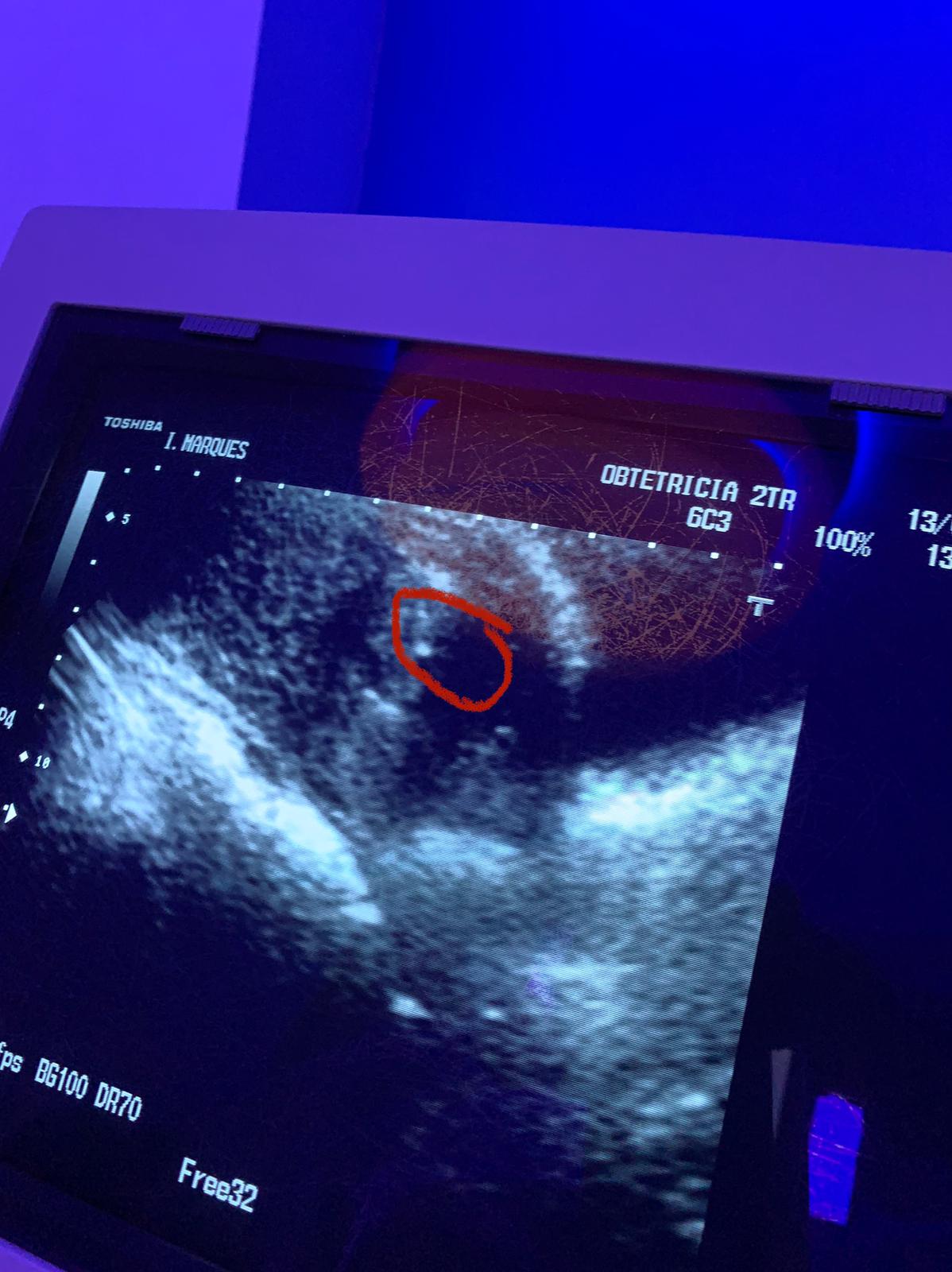 Did I feel any different afterwards? No, it didn’t feel like I had had anything done.
Did I feel any different afterwards? No, it didn’t feel like I had had anything done.
Next was the ten-day waiting game. Let’s just say it was hard not to test myself. I flew back to London to stay with family the same day and waited patiently (or not so) for the ten days to be up. I admit that I did do a pregnancy test on day eight, but it was negative. I did another two (to be sure) on day ten, and both were negative. I should also mention that I woke up at 6 am on day ten, and I was so excited to do the test….
Pregnancy tests measure the levels of HCG, the pregnancy hormone, in your body when you do a test on your first wee of the day. Most tests will only recognise HCG levels of over 25; some will recognise over 10. The reason that most tests only test positive at 25 is that the medical profession regards an HCG level of five as not pregnant. The levels between five and 25 are labelled as unsure, as certain medications can affect your levels. An HCG of over 25 is definitely pregnant.
Just so you know, a positive pregnancy test can’t be a false positive. So if it’s positive, you are pregnant. However, a negative result can be a false negative and therefore positive.
Anyway, back to the story, my two pregnancy tests were both negative, but because of the false negative situation, the clinic asked me to go for a blood test to double check before I stopped taking the IVF drugs. A blood test will tell you exactly what your HCG levels in your blood are.
A trip to Harley St, in London, for a blood test and three hours later I got the result, an HCG level of one. Definitely not pregnant.
It was all a bit surreal. I had flown from Australia to London, then onto Spain to get pregnant, and it hadn’t worked. I was due to fly back to Australia on Sunday, and it was currently Friday. I needed to decide quickly what I wanted to do.
That night, when I went to bed, it all hit me, and I cried a lot. Because I was so upset and really wanted to be pregnant, I decided to stay in Europe and give it another shot…. Stay tuned for my next post – I’ll be talking all about embryo transfer number two!
About Hoopsy
Hoopsy is on a mission to make healthcare more sustainable—starting with eco pregnancy test kits. Our plastic-free, paper-based hCG pregnancy test strips reduce waste without compromising accuracy. We believe better health starts with better choices—for you, and for the planet.
Learn More About…


